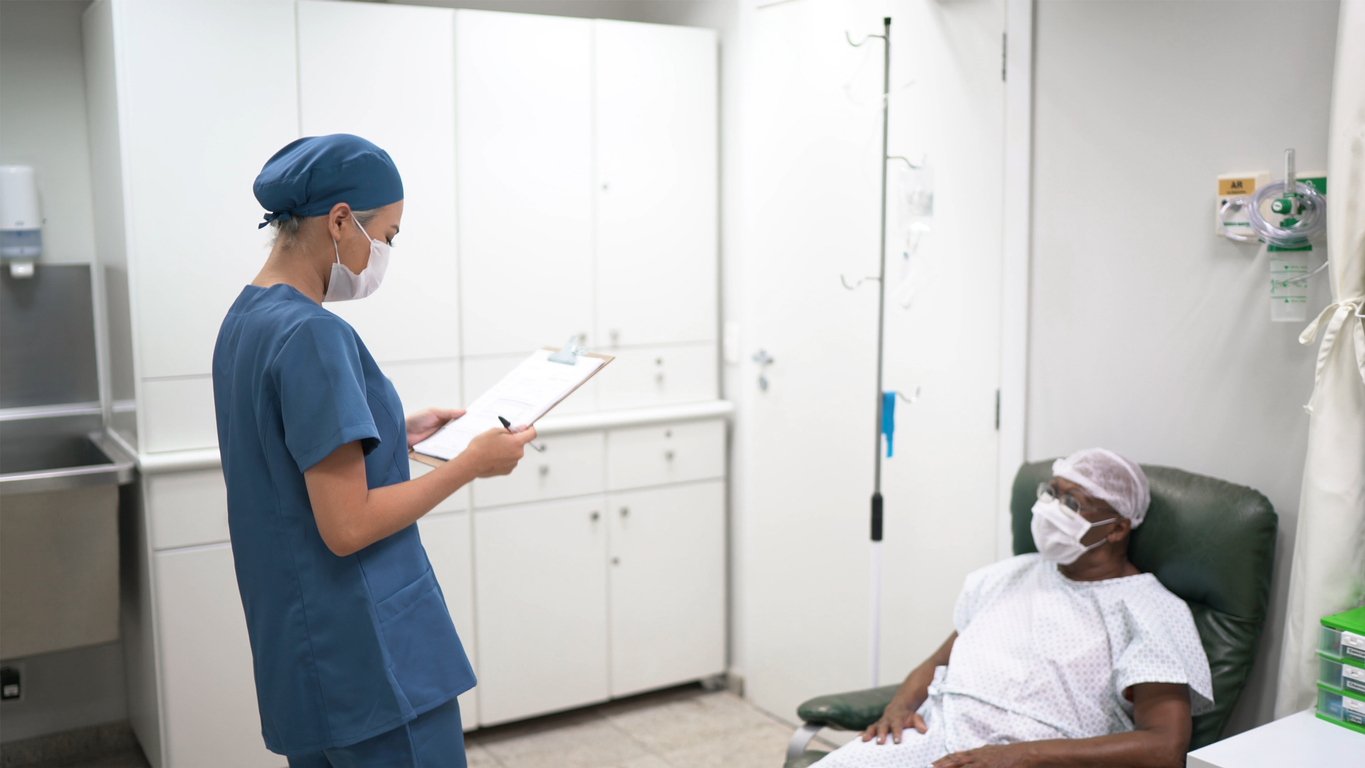Ovarian cancer is associated with the highest mortality of all gynaecological cancers in the Western world. The majority of patients receive a diagnosis of advanced disease, in which the disease has spread beyond the ovaries to the peritoneal surface. In Ireland, there are 411 new cases annually and 272 deaths from epithelial ovarian cancer (EOC). EOC generally presents at an advanced stage and despite aggressive cytoreductive surgery and adjuvant systemic chemotherapy, at least 70 per cent of patients experience recurrence. Survival rates in Ireland are among the lowest in Europe. Recently, evidence has emerged that adding hyperthermic intraperitoneal chemotherapy (HIPEC) at the time of cytoreductive surgery improves recurrence and overall survival rates of women with EOC.
The use of HIPEC in combination with cytoreductive surgery is already a well-established treatment option for patients with pseudomyxoma peritonei and selected patients with colorectal cancer peritoneal metastases.
Management of EOC
The management of primary EOC has evolved over the last two decades, with a move towards more aggressive cytoreductive surgery, often involving multivisceral resections. The most effective treatment for advanced disease is aggressive cytoreductive surgery, with removal of all visible tumour, followed by six cycles of adjuvant chemotherapy using carboplatin and paclitaxel or interval cytoreduction, which is performed following three cycles of chemotherapy.
The benefits of cytoreductive surgery are removal of a poorly-vascularised tumour where treatment may have poor penetration, and the removal of chemo-resistant clones, which leaves behind smaller residual implants, which are more susceptible to chemotherapy. The volume of residual tumour following cytoreductive surgery remains the most important prognostic factor, with optimum residual disease being described as <1cm. Each 10 per cent increase in maximal cytoreduction within a population is associated with a 5.5 per cent increase in median survival time.
The evolution of intra-peritoneal chemotherapy for ovarian cancer
In 2006, following the analysis of three randomised, controlled trials, the US National Cancer Institute and the Gynaecological Oncology Group recommended that patients with EOC optimally cytoreduced (<1cm residual tumour) be offered adjuvant intraperitoneal (IP)/IV chemotherapy. Adjuvant intraperitoneal chemotherapy demonstrated a 20 per cent improved overall survival following a Cochrane review. The rationale for administration of IP chemotherapy is to have direct contact of cytotoxic drugs to the malignant cells without reliance on the blood supply to the area. Unfortunately, the use of IP chemotherapy has not been widely accepted due to persistent concerns regarding toxicity. Interestingly, less than 50 per cent of patients received six cycles of IP chemotherapy, but a follow-up, 10-year analysis of two of the adjuvant IP chemotherapies demonstrated that IP therapy was associated with a 23 per cent reduction in the risk of death compared to IV therapy and a 10-month overall survival benefit (51 vs 61 months). The molecular mechanisms underlying the increased efficacy of IP therapy require further investigation. It has been established that IP administration of cisplatin and carboplatin results in several-fold higher concentrations, with peritoneal-to-plasma ratios of 12 and 18, respectively.
Given the obvious survival benefits but inherent toxicity issues associated with IP chemotherapy, recent efforts have focused on the use of intra-operative chemotherapy in the form of HIPEC. In conjunction with complete cytoreductive surgery, HIPEC has been a cornerstone of the treatment of pseudomyxoma peritonei for the last decade. Theoretically, HIPEC provides effective treatment of microscopic tumour deposits following cytoreduction by mechanical (continuous flow of the perfusion solution), physical (heat) and drug (cytostatic)-related measures. As HIPEC is conducted at the same surgical procedure, it removes catheter-related toxicity and patient intolerance, as highlighted above.
Malignant cells are selectively killed by hyperthermia in the temperature range of 41-to-43oC and the basis for these effects have been well elucidated. Apart from the direct cytotoxic effects of hyperthermia, it is also known that hyperthermia enhances the cytotoxic efficacy of a number of chemotherapy agents. Hyperthermia initiates a number of advantages when combined with platinum-based chemotherapy. It leads to increased platinum uptake by malignant cells, improved drug pharmacokinetics, increased drug tissue penetration and increased cisplatin-DNA adduct formation.
HIPEC for ovarian cancer
A recent phase 3, randomised trial published in the New England Journal of Medicine has produced the most convincing argument to date that a single administration of cisplatin-based HIPEC delivered following surgical resection of EOC may provide a meaningful advantage in patients with <1cm residual disease at the end-of-interval cytoreductive surgery.
All patients in this study had stable disease after three cycles of neoadjuvant carboplatin and paclitaxel chemotherapy and if optimal cytoreduction (<1cm residual tumour) was achieved, they were randomised to interval cytoreductive surgery with or without HIPEC (cisplatin, 100mg/m2).
The OVIHIPEC study randomised 245 women and demonstrated that the addition of HIPEC to interval cytoreductive surgery was reasonably safe; the patients who underwent interval cytoreductive surgery with HIPEC (surgery-plus-HIPEC group) and those who underwent the surgery without HIPEC (surgery group) had a similar side-effect profile and a similar rate of grade 3 or 4 adverse events (27 vs 25 per cent). The median length of stay was eight days in the surgery group and 10 days in the surgery-plus-HIPEC group. There was not a significant delay in the reinitiation of routine postoperative chemotherapy post-HIPEC. The median recurrence-free survival, which was the primary end-point of the trial, was 10.7 months in the surgery group, as compared with 14.2 months in the surgery-plus-HIPEC group (HR for disease recurrence or death, 0.66; 95 per cent CI 0.50-0.87; P=0.003). The median overall survival was almost one year longer in the surgery-plus-HIPEC group than in the surgery-only group (45.7 vs 33.9 months; HR for death, 0.67; 95 per cent CI, 0.48-0.94; P=0.02).
These data demonstrate that the addition of HIPEC at the time of interval cytoreductive surgery is safe and provides a survival advantage in women with stable disease after three cycles of neoadjuvant carboplatin and paclitaxel and should be considered as standard of care in a subgroup of ovarian cancer patients. Of note, the progression-free survival rates in this study were still less than those seen in studies of women undergoing primary cytoreduction and adjuvant systemic chemotherapy and which should still be considered the gold standard, if feasible.
Conclusion
As a result of these findings, the Mater Misericordiae University Hospital, Dublin, has commenced offering HIPEC to ovarian cancer patients based on the OVIHIPEC criteria. This has occurred via integration of gynaecological oncology services into the peritoneal malignancy institute at the Mater to work in a multidisciplinary team with the Colorectal Department, which has established the unit. Since 2013, in excess of 150 patients with pseudomyxoma peritonei or metastatic colorectal cancer have undergone cytoreductive surgery with HIPEC. In 2017, 70 patients with EOC were treated at the Mater; 50 per cent had primary cytoreduction. A total of 13 patients had interval cytoreduction procedures with stable disease and would have been considered for HIPEC based on the OVIHIPEC inclusion criteria. As further centralisation of complex gynaecological oncology services in Ireland is anticipated, we expect to see the number of patients who are suitable for interval cytoreduction, along with HIPEC increase. It is estimated that the Mater will offer this service to 20 patients per year initially, but over a period of five years this may increase to 50 patients per year. These patients will be managed in a multidisciplinary setting, utilising international best practise and the experience of a number of surgical and perioperative teams.
References on request













Leave a Reply
You must be logged in to post a comment.